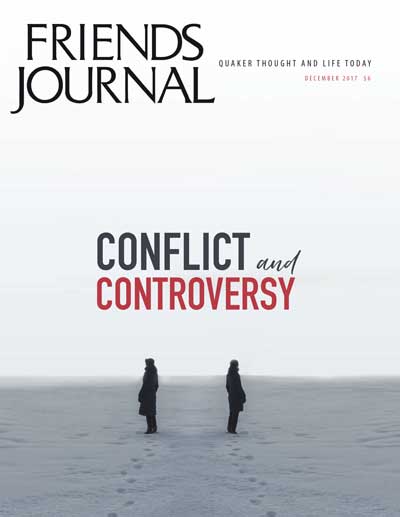
The following humorous story from the Buddhist tradition suggests that not all spiritual practices originate from divine guidance or enlightenment.
When the Zen spiritual teacher and his disciples began their evening meditation, the kitten that lived in the monastery made such noise that it distracted them. So the teacher ordered that the kitten be tied up during the evening practice. A year or so later, the teacher died, but the disciples continued the practice of tying up the cat during meditation sessions. And when the cat eventually died, another cat was brought to the monastery and tied up.
Centuries later, learned descendants of the spiritual teacher wrote scholarly treatises about the religious significance of tying up a cat for meditation practice.
This story tells a deep truth about followers of religions becoming tangled up in trivia, giving certain practices a significance never intended by the originator.
The teacher who begins tying up the cat does so for a reason specific to the situation—i.e., the kitten’s playfulness is noisy and disturbs the monks’ meditation. Even a year later when the teacher dies, the cat is still young enough to be rambunctious, so the monks continue tying it up. By the time the cat grows old and dies, say 15 years later, the older monks seem to have forgotten exactly why they tied up the cat in the first place, but they associate it with their teacher; newer disciples only know that it’s the way things have always been done at the monastery. And meditation doesn’t seem quite right unless they have a cat tied up somewhere, so they bring in a new one to continue the tradition.
Because tying up the cat has no real significance other than keeping a particular cat from disturbing meditation, the teacher never writes or teaches anything about tying up a cat, so the practice gains a kind of mystery and assumes a significance never intended by its originator. After a few centuries, “learned descendants of the spiritual teacher” write scholarly treatises about the religious significance of tying up a cat for meditation practice.
Our worship bears little resemblance to that of the original Friends. We have the original teaching and examples, but we also have several cats tied up.
Let’s apply this simple story to the practice of Quaker worship. In seventeenth-century England, Friends met in silence with no hired minister for specific reasons; for one thing, they were protesting the hand-in-glove relationship between the English state and the clergy. Meeting in silence without an official clergyman, or “hireling minister,” was a way to bypass a corrupt system and go directly to the Source itself. In a twenty-first-century democracy, care is taken to keep church and state separate, so a minister does not—cannot—represent the government. The original purpose of having worship without hired ministers is like the original purpose of having a rowdy kitten tied up: to address a specific situation that no longer exists.
At the time of the early Friends, only men who studied at Oxford or Cambridge could become ministers. George Fox taught that everyone has equal access to the Holy Spirit: no one has more than anyone else, and it was not necessary to attend a university in order to have access to the Divine. Early Friends meetings addressed this specific situation: a desire to show there was no need to follow a program laid out by seminary graduate or church liturgy. Instead, worship was to be “programmed” by the Holy Spirit, who could and did use anyone as ministers, even women, even children, even servants! (Most programmed Friends meetings today, however, prefer to hire seminary graduates, even of other denominations.)
Among contemporary Friends—both programmed and unprogrammed—our worship bears little resemblance to that of the original Friends. We have the original teaching and examples, but we also have several cats tied up.
Perhaps the most significant difference in our meetings for worship is the matter of theological unity. Early Friends all believed in the same Source (God) and used the same vocabulary to talk about it—Christian imagery and vocabulary from the Scriptures, all while acknowledging that other faiths speak in different languages about the same Source. Friends today have trouble worshiping together (in spite of the Quaker emphasis on the unity of Truth) because some Friends—in fact, some who most adamantly insist they are the only true Quakers—are offended by the words “God” and “Jesus.” Others, equally sure they are the only true Quakers, are offended by using “the Light” instead of Jesus Christ. “Tying up the cat” around language can make Friends fearful of speaking truthfully about spiritual matters and can inhibit ministry. In contrast, early Friends who spoke out of the silence could rely on their listeners hearing the Truth without having to define all their terms.
“Learned descendants” of George Fox and the early Friends have written “scholarly treatises” about the necessity of a speaker not preparing in advance, without taking into account that first Friends could recite long passages of the Bible from memory, which made them always prepared to speak of spiritual matters in ways contemporary Friends are not. Learned descendants of the early Friends write scholarly treatises that ignore the truth that we no longer read the Bible with fresh and personal insights, that our attention spans are shorter, and that the certainty of our faith is weaker.
We are all thieves, claiming their first-hand experience as our own.
Too often, Friends insist the only proper way to do Quaker worship is the way they think earlier Friends did, without being aware of (or acknowledging) specific purposes of earlier Friends that do not apply to current reality. We are all thieves, claiming their first-hand experience as our own, getting bogged down in the letter of their law, instead of seeking the spirit behind those laws.
I leave you with words from George Fox’s Letter 48, expressing a truth not tied to a specific situation or condition (there are no cats involved here):
Friends, to you all this is the Word of the Lord: take heed of judging one another. Judge not one another. . . . But every one of you in particular with the Light of Christ see yourselves, that self may be judged out with the Light in everyone. Now, all loving the Light . . . here all are in unity and no self-will can arise nor no mastery. . . . Dwelling all in the Light, which is unchangeable, you come to judge all the changeable ways and worships by that which comes from God. And with his Light . . . all those things are judged . . . dwelling in judgment thus, you will be filled full of mercy.



Early Friends consistently criticized the organized church of their time for “tying up a cat,” i.e. holding on to liturgy and sacraments that were in church tradition but not in Jesus’ teaching. Fox and others frequently alluded to 2 Timothy 3:5 regarding “professors” of Christianity, who had the form but not the substance of the faith. (King James Version: “a form of godliness, but denying the power thereof: from such turn away.”)
I have often said that tradition can be a good reason for doing something, but it perhaps ought never be the only reason.